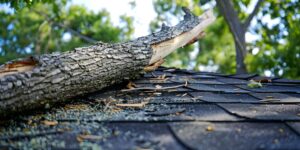A year after Superstorm Sandy catastrophically flooded hundreds of miles of eastern U.S. coastline, thousands of people still trying to fix their soaked and surf-battered homes are being stymied by bureaucracy, insurance disputes and uncertainty over whether they can even afford to rebuild.
Billions of dollars in federal aid appropriated months ago by Congress have yet to reach homeowners who need that money to move on. Many have found flood insurance checks weren’t nearly enough to cover the damage.
And worse, new federal rules mean many in high-risk flood zones may have to either jack their houses up on stilts or pilings—an expensive, sometimes impossible task—or face new insurance rates that hit $10,000 or more per year.
“It’s just been such a terrible burden,” said Gina Maxwell, whose home in Little Egg Harbor, N.J., is still a wreck after filling with four feet of water. Contractors say it will cost $270,000 to rebuild—about double what the insurance paid out. The family doesn’t have the money.
“What do we do with this house? Just give them the deed back?” she said. “My son is 11. He has a little piggy bank in his room. He said, ‘Take it, mom.'”
In blue-collar Union Beach, N.J., the owner of the popular restaurant Jakeabob’s Bay has come up with only a quarter of the $2 million she needs to rebuild. In Long Beach, a barrier-island city of 33,000 on the coast of New York’s Long Island, residents in some neighborhoods say half their neighbors have yet to return.
“I don’t think Long Beach is ever going to be what it was,” said resident Ginger Matthews.
Sandy roared out of the Atlantic and struck the New York and New Jersey coasts on Oct. 29, 2012. The 1,000-mile-wide mashup of a hurricane and another huge weather system killed at least 181 in the U.S. and caused an estimated $65 billion in damage.
Floodwaters swept over densely populated barrier islands and pushed deep into bays and harbors from Atlantic City, N.J., all the way to Rhode Island. In New York City, the storm surge hit nearly 14 feet, sending the Hudson and East rivers pouring into the city’s subway and commuter tunnels and knocking out power to the southern third of Manhattan. Gas stations ran out of fuel. High-rise residents had to carry water up darkened stairwells. Thousands of fragile patients evacuated crippled hospitals and nursing homes.
Out of that chaos came remarkable stories of recovery. New York City’s submerged subways and tunnels sprang back to life with surprising speed. Beach boardwalks were rebuilt. Mountains of debris were removed. Flooded schools, nursing homes and amusement parks have reopened. The whine of power tools hasn’t ceased in many neighborhoods since the moment the floodwaters receded.
But for every success story, there are tales of continuing frustration.
On New York City’s Staten Island, where 23 people died, vacant lots have been multiplying on spots where homes once stood. Sheetrock and debris still decorate front lawns. Plywood covers bungalows, “Restricted Use” signs hanging on their front doors.
On the Jersey shore, officials said that in the tiny seaside borough of Mantoloking, where the storm washed dozens of homes clean into Barnegat Bay, fewer than half the buildings in town have been repopulated.
While some beach towns quickly rebuilt their seaside promenades and beaches, Toms River, N.J., where hundreds of homes were destroyed, managed to rebuild only two blocks of boardwalk and had a small sliver of beach open this summer. Beachgoers had to walk past rubble and still-to-be-torn-down houses to reach the sand.
The federal government has responded by pouring money into the region.
The Small Business Administration authorized $2.4 billion in disaster loans to more than 36,000 households and businesses. The Federal Emergency Management Agency gave $1.42 billion to help storm victims pay rent, replace lost possessions and make emergency repairs. The agency gave another $2.7 billion to help municipalities clean up debris, repair critical infrastructure and reopen damaged hospitals. The federal flood insurance program paid $7.8 billion to nearly 132,000 policyholders who sustained damage during the storm.
But for some people, is hasn’t been enough. Many had no flood insurance. And the process of getting federal aid money into people’s hands has been slow.
First, the states had to build homeowner aid programs from scratch. Then the programs had to accept and process many thousands of applications while navigating numerous federal rules and reviews.
Seth Dimond, director of storm recovery for New York Gov. Andrew Cuomo, said the delays caused some homeowners to doubt that the program was real. But he said bureaucratic hurdles are getting resolved.
“We’ve gotten to the point where we can release money,” he said.
New York state sent letters this month to 4,300 homeowners on Long Island, saying they had qualified for a collective $452 million in federally funded, state-administered rebuilding grants. The average award was $112,000—a godsend to people who had put off reconstructing their homes because they weren’t sure how to pay for the work.
New Jersey’s parallel rebuilding program began notifying 4,100 people of eligibility for similar grants at around the same time, with plans to eventually award $600 million.
On New York City’s beachfront enclave of Breezy Point, new homes are beginning to rise after many months of inactivity on the sandy blocks where fire burned 130 houses and flooding destroyed another 220.
“There’s hope. Things are finally starting to happen,” said Police Capt. Roy Richter as he watched a new house going up. He hopes to be back home—in a house elevated seven feet higher than his old one—by St. Patrick’s Day.
In Seaford Harbor, N.Y., auto mechanic Michael Serpico prepared to move into a camper in his driveway while contractors tear down his ruined home and build him a new one.
“Hopefully in six more months,” he said, “I’ll live like a human being again.”
It is hard to measure exactly where the rebuilding process stands today.
Neither FEMA nor state officials in New York and New Jersey were able to say this month how many people displaced by the storm have still been unable to return.
In early September, planning officials in hard-hit Ocean County, N.J., estimated that 26,000 people there were still unable to use damaged and destroyed homes. Estimates were lower elsewhere. New York City officials said maybe 1,000 homeowners and another 1,000 renters there were still in temporary lodging.
Since the hurricane, “resiliency” has become the buzzword to better prepare the coastline for a day when sea levels are higher and big floods happen more frequently.
New York Mayor Michael Bloomberg released a $19.5 billion plan calling for as many as 257 initiatives that might help the city survive future catastrophic weather events—a necessity since, according to new FEMA flood maps, the city has 68,000 buildings that lie within the 100-year flood plain.
Building codes throughout the region are being overhauled to let homeowners build higher. There are projects to build protective dunes, elevate electrical infrastructure and erect sea walls.
Yet, despite all that, “we are as vulnerable today as we were a year ago,” said Klaus Jacob, a research scientist at Columbia University’s Earth Institute.
Much of the rebuilding work is simply putting people back into the path of future floods, he said. It is unclear whether people are really committed to planning for climate change.
If Sandy wasn’t enough of the warning, Jacob said, people should consider this: If ocean levels rise the way many climate scientists predict, Sandy’s catastrophic flood won’t be a once-per-century event. The water may be that high all the time.
“Even,” he said, “on a sunny summer day.”





















 Unite and Conquer: How the Insurance Industry Can Deflate Social Inflation
Unite and Conquer: How the Insurance Industry Can Deflate Social Inflation  Allstate Thinks Outside the Cubicle With Flexible Workspaces
Allstate Thinks Outside the Cubicle With Flexible Workspaces  A New Claims Playbook: United and Street Smart on Litigation Demands
A New Claims Playbook: United and Street Smart on Litigation Demands  One Meter Sea Level Rise by 2100 Could Affect Over 14M People, $1T Worth of Property
One Meter Sea Level Rise by 2100 Could Affect Over 14M People, $1T Worth of Property 
